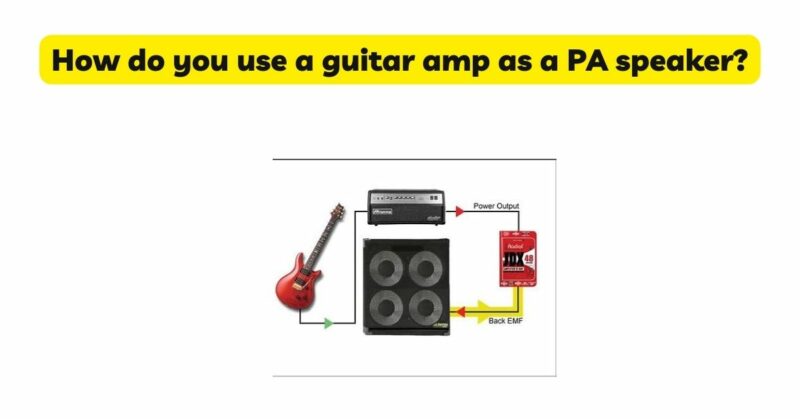Guitar amps are known for their ability to amplify the sound of electric guitars, but their versatility extends beyond the realm of guitars alone. In a pinch, you can repurpose your guitar amp as a PA (public address) speaker for small-scale performances, rehearsals, or public speaking engagements. This article will guide you through the process of using a guitar amp as a PA speaker, highlighting the considerations, limitations, and techniques involved.
Understanding the Differences: Before delving into using a guitar amp as a PA speaker, it’s important to recognize the differences between the two. Guitar amps are designed to amplify and shape the specific frequencies produced by electric guitars, while PA speakers are built to deliver a broader range of frequencies, catering to vocals and other instruments. Nevertheless, with proper adjustments and techniques, a guitar amp can serve as a functional PA speaker for certain applications.
- Power Considerations: One of the primary considerations when using a guitar amp as a PA speaker is its power output. Guitar amps are typically designed for lower power levels, suitable for intimate settings and close proximity to the instrument. In contrast, PA speakers are designed to cover larger areas and deliver higher volumes. Assess the wattage of your guitar amp and ensure it is sufficient for your specific needs. It’s important to match the power requirements of the venue or event to avoid distortion or potential damage to the amp.
- Input Options: Guitar amps usually feature a single input designed for guitars, which may not be ideal for connecting microphones or other audio sources used in a PA system. However, many guitar amps have additional inputs or channels that can accommodate a microphone or line-level signal. Check if your guitar amp has such options and determine the best input to use for your PA setup. It may require adapters or cables to connect microphones or other audio sources to the amp.
- EQ and Tone Controls: Guitar amps often come equipped with built-in equalization (EQ) and tone controls that are optimized for electric guitars. When using a guitar amp as a PA speaker, these controls can help shape the sound to some extent, but they may not provide the precise tonal control required for vocals or other instruments. Experiment with the EQ and tone controls to find the best settings that enhance the clarity and intelligibility of the sound.
- Positioning and Coverage: Consider the positioning and coverage of your guitar amp when using it as a PA speaker. Guitar amps are typically designed for close listening and may have a directional sound projection. Experiment with the positioning of the amp to achieve the best coverage of the audience or listening area. Placing the amp at an elevated position, angling it slightly, or using a speaker stand can help improve the sound dispersion.
- Monitor Usage: In some cases, using a guitar amp as a personal monitor can be a practical solution. This is especially useful in situations where you need to hear your own instrument or vocals on stage. Connect your instrument or microphone to the guitar amp, position it near you, and adjust the volume and tone settings to suit your monitoring needs. This allows you to hear yourself clearly while still utilizing a dedicated PA system for the main sound reinforcement.
- Limitations and Alternatives: It’s important to acknowledge the limitations of using a guitar amp as a PA speaker. Guitar amps are not designed to handle the full range of frequencies required for vocals and other instruments in a PA system. They may lack the power, clarity, and overall sound dispersion capabilities of dedicated PA speakers. If you anticipate regular PA usage or larger venues, investing in a proper PA system or powered PA speakers is highly recommended for optimal performance.
Conclusion: While it is possible to use a guitar amp as a PA speaker, it’s essential to consider the power output, input options, EQ controls, positioning, and coverage to achieve satisfactory results. Be aware of the limitations and potential compromises in sound quality when using a guitar amp for PA purposes. For more demanding applications or regular PA usage, investing in dedicated PA speakers or a proper PA system will provide superior sound reinforcement and overall performance.


